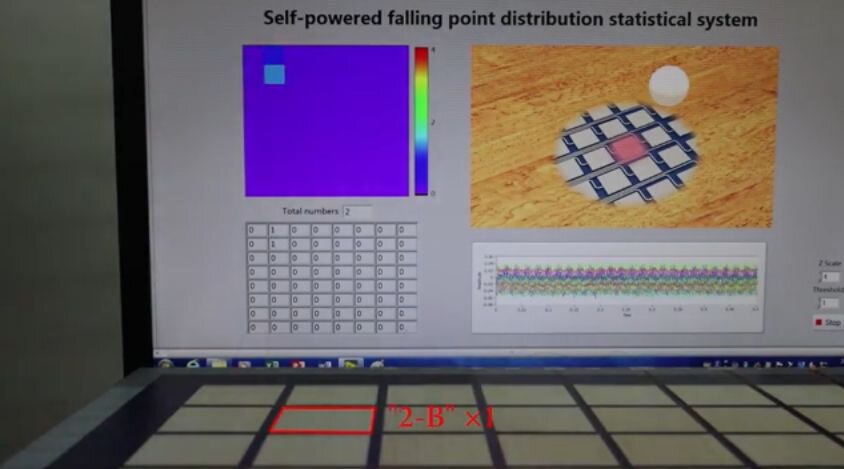
A team of researchers from China and the U.S. has built a smart, self-powered ping-pong table. In their paper published in the journal Nature Communications, the group describes how the table was built and how it powers itself.
As anyone who has ever watched a table-tennis match can attest, it is a game that moves very quickly—in some cases, too quickly for the human eye to see what happens. In professional or Olympic level games, such speed has necessitated the use of electronic sensors that can see rapid events human judges cannot, such as whether a ball hit the top edge or the side edge of the table. The distinction can make a difference in a match.
But such sensors must be powered by batteries, which, the researchers note, not only have a limited lifetime, but have negative environmental impacts. In this new effort, the researchers have found a new way to power the sensors by embedding triboelectric nanogenerators (TENGs) in the surface of the table, allowing the table to power itself. TENGS, the researchers note, can convert mechanical energy into electricity. Sensors in the smart table convert the mechanical energy of a ball impacts into electricity that is used to power sensors.
TENGS are nothing new, of course; what is original in this new effort is the way they were made. Traditionally, they are made of synthetic polymers, which are not environmentally friendly. To make them biodegradable, the researchers made them out of wood. They came up with a two-step process for making very thin wood films that were assembled into a grid just beneath the surface of the table. Thus, no matter where the ball strikes the table, its energy is captured and converted into electricity.
The researchers report that their smart table can collect and display data in real time regarding where the ball hits and its speed—it can also trace the paths of balls in play in general, as well as carry out edge readings. They suggest their table would be a boon to players, coaches and table-tennis judges.
More information: Jianjun Luo et al. Flexible and durable wood-based triboelectric nanogenerators for self-powered sensing in athletic big data analytics, Nature Communications (2019). DOI: 10.1038/s41467-019-13166-6
© 2019 Science X Network
Citation: A smart, self-powered ping-pong table (2019, November 27) retrieved 27 November 2019 from https://techxplore.com/news/2019-11-smart-self-powered-ping-pong-table.html
This document is subject to copyright. Apart from any fair dealing for the purpose of private study or research, no part may be reproduced without the written permission. The content is provided for information purposes only.
